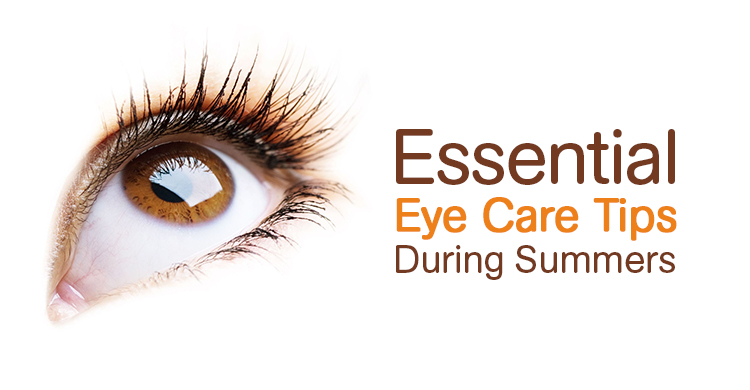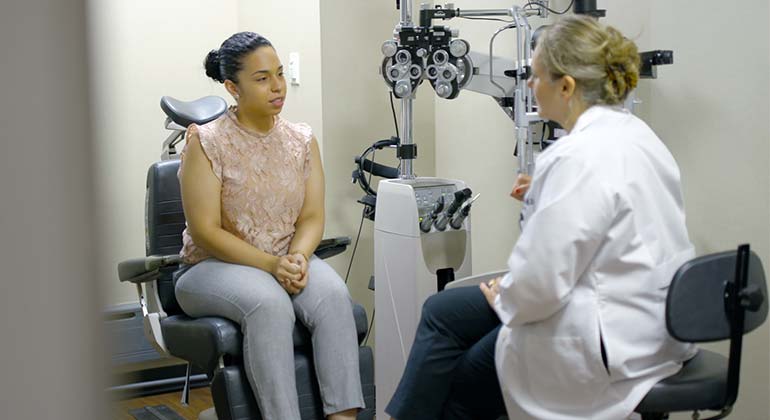The Full Malfunction of Retina Disorders and Just How They Affect Your Vision
Retina disorders can interrupt this delicate procedure, leading to a variety of vision disabilities. By discovering the anatomy of the retina, typical disorders that can affect it, their causes, symptoms, and available therapy choices, we can gain beneficial understandings into preserving and safeguarding our vision.
Summary of Retina Composition
The intricate structure of the retina serves as the foundation for visual assumption and plays a crucial duty in the procedure of converting light right into neural signals for the brain to analyze. Located at the back of the eye, the retina contains numerous layers that collaborate perfectly to help with vision. At the core of this intricate structure are photoreceptor cells understood as cones and rods. Rods are accountable for vision in low light problems and identifying activity, while cones are essential for shade vision and comprehensive aesthetic skill. These photoreceptor cells transform light energy right into electric signals that are after that refined by various other retinal cells, such as bipolar cells and ganglion cells. The bipolar cells send signals from the photoreceptors to the ganglion cells, which in turn send these signals via the optic nerve to the mind for visual handling. Understanding the complex anatomy of the retina is fundamental in understanding just how vision functions and just how numerous retina disorders can influence aesthetic assumption.

Typical Retina Disorders
Retina conditions incorporate an array of problems that impact the detailed structure of the eye in charge of visual handling. One common problem is age-related macular degeneration (AMD), a leading reason of vision loss in people over 50. AMD affects the macula, a component of the retina crucial for sharp main vision, leading to blurriness or dead spots in the central visual area.
Another common problem is diabetic retinopathy, happening in people with diabetes. High blood sugar levels damage the capillary in the retina, causing vision disability or blindness if left neglected. Retinal detachment is a major problem where the retina draws away from its normal setting, triggering an abrupt beginning of advances, flashes of light, or loss of vision in a curtain-like pattern.
Finally, retinitis pigmentosa is a group of congenital diseases that cause the failure and loss of cells in the retina, bring about evening blindness and a gradual narrowing of the aesthetic area - neurologist Andalusia. Comprehending these typical retina problems is important in protecting vision and seeking timely medical intervention
Root Causes Of Retina Disorders
Numerous factors contribute to the development of retina conditions, including genetic predispositions, way of living options, and underlying health problems. Hereditary predispositions play a significant function in numerous retina conditions, such as retinitis pigmentosa and macular deterioration. Individuals with a family history of these problems go to a greater threat of creating them due to acquired hereditary mutations affecting the retina's function.
Way of life selections can additionally influence retina wellness. Smoking cigarettes, for instance, has been connected to a raised threat of age-related macular deterioration, a common retina disorder that can result in vision loss. Poor nutritional routines doing not have important nutrients like vitamins A, C, and E, in addition to omega-3 fatty acids, can also add to the growth of retina problems.
Underlying wellness problems, such as diabetes mellitus and high blood pressure, are known to affect the retina. Diabetic retinopathy, an issue of diabetic issues, can cause damage to the blood vessels in the retina, leading to vision disability. Similarly, high blood pressure can result continue reading this in hypertensive retinopathy, where hypertension affects the capillary in the retina, potentially creating vision troubles. Understanding these causes is crucial in preventing and taking care of retina problems.
Signs and Medical Diagnosis
Offered the significant effect that triggers such as genetic predispositions, lifestyle options, and underlying health problems can carry the growth of retina disorders, it is important to identify the signs and utilize efficient diagnostic approaches for early detection and monitoring. Symptoms of retina conditions can differ depending on the particular problem however might consist of blurred or distorted vision, the unexpected look of advances or flashes of light, a dark place in the center of your vision, or a progressive loss of main vision. It is vital to look for prompt medical focus. if you experience any of these signs and symptoms.
Detecting retina conditions normally involves a detailed eye assessment, which may include visual skill tests, dilated eye tests, optical coherence tomography (OCT), fluorescein angiography, or other imaging examinations. Your eye treatment provider might additionally inquire regarding your medical history and any type of family members background of eye problems. Early discovery via routine eye examinations is vital to avoid vision loss and managing retina conditions efficiently. Your medical care copyright will function with you to develop a customized therapy plan to maintain your vision. if detected with a retina condition.

Treatment Alternatives and Management
Effective management of retina disorders entails a diverse technique that integrates tailored therapy choices to address specific conditions and preserve visual feature. Therapy options for retina disorders differ relying on the underlying cause and intensity of the problem. In instances of retinal detachment, medical treatments such as vitrectomy or scleral fastening might be necessary to reattach the retina and protect against vision loss. For conditions like age-related macular degeneration (AMD), treatments like anti-VEGF injections or laser therapy can assist decrease disease progression and preserve remaining vision.
Normal eye examinations and very early detection of retina problems are important for effective directory management and therapy end results. Clients with retina conditions should function closely with their ophthalmologist to Read More Here develop an individualized treatment plan that resolves their specific requirements and aids keep optimal aesthetic feature.
Conclusion
In final thought, recognizing the anatomy of the retina, common problems, causes, signs, medical diagnosis, and therapy options is important in taking care of vision problems. Retina disorders can substantially influence vision and quality of life, making early detection and proper administration crucial. By staying informed about these conditions and seeking proper clinical treatment, people can much better maintain their vision and keep overall eye wellness.

Understanding the elaborate composition of the retina is essential in understanding just how vision features and just how numerous retina disorders can impact visual assumption.
Retinal detachment is a serious disorder where the retina pulls away from its normal position, causing a sudden onset of floaters, flashes of light, or loss of vision in a curtain-like pattern.
Symptoms of retina disorders can vary depending on the specific problem yet might consist of obscured or misshaped vision, the abrupt look of drifters or flashes of light, a dark area in the center of your vision, or a progressive loss of central vision.In conclusion, understanding the anatomy of the retina, usual problems, creates, signs, diagnosis, and treatment alternatives is important in managing vision impairments.